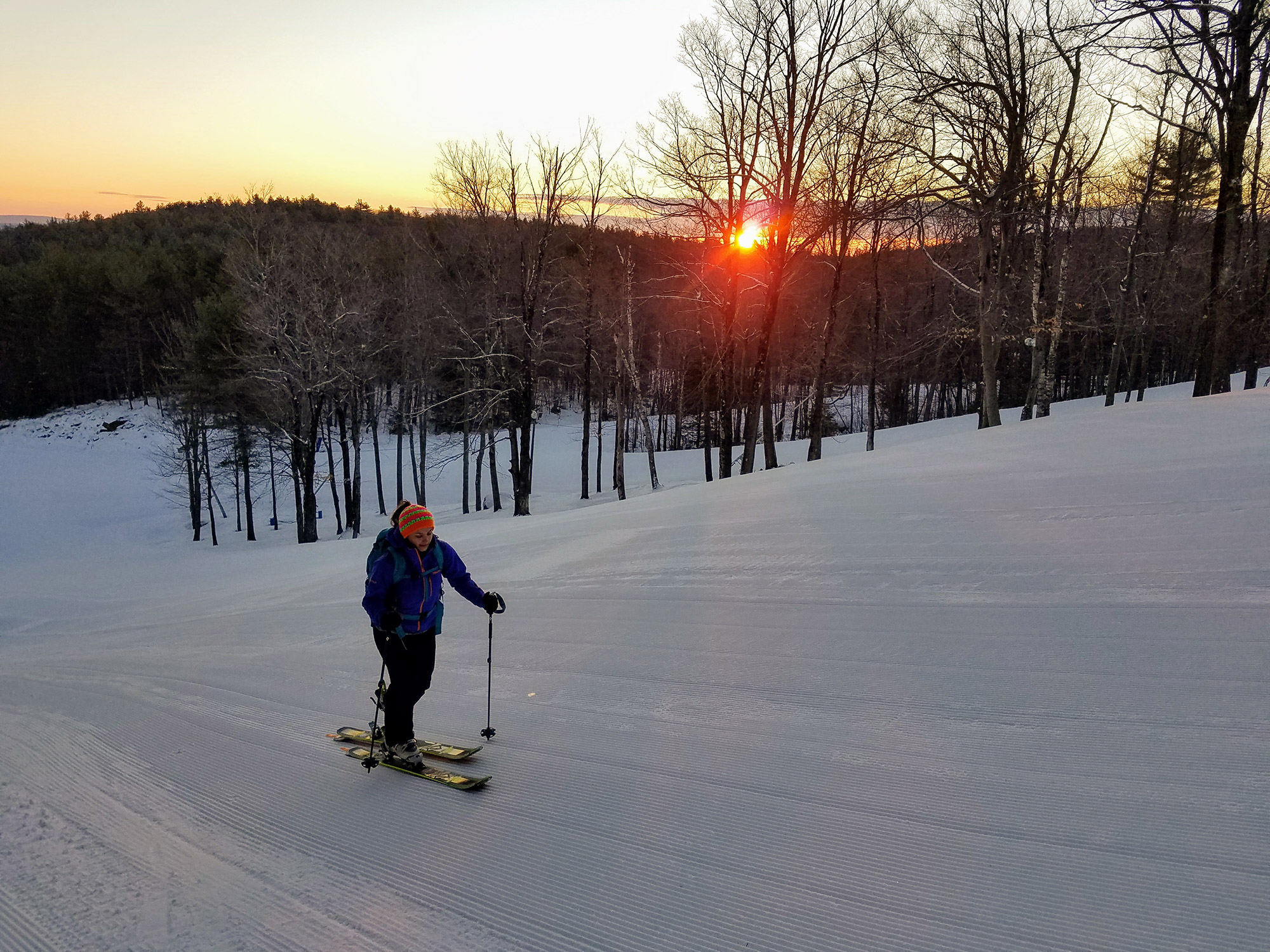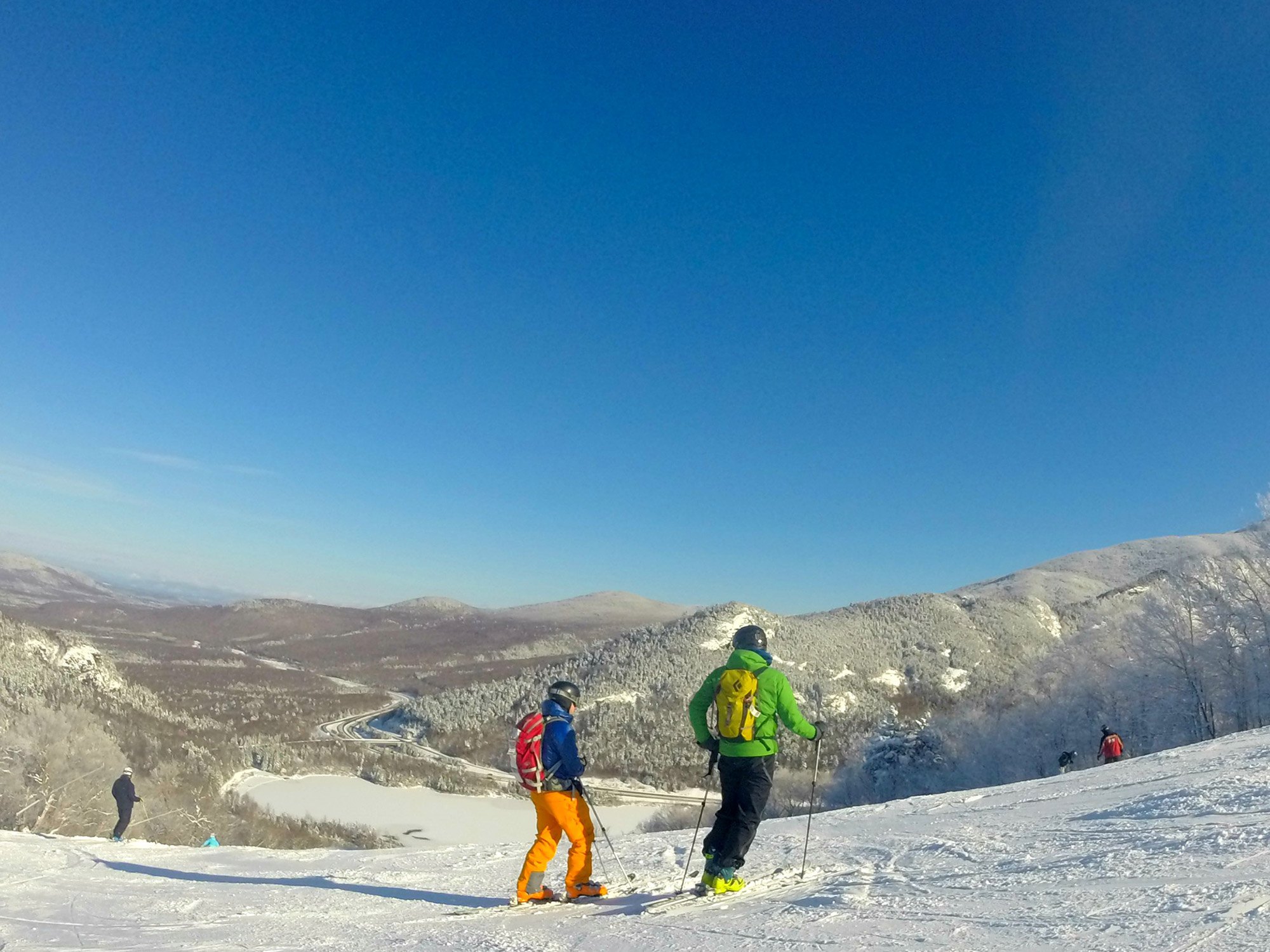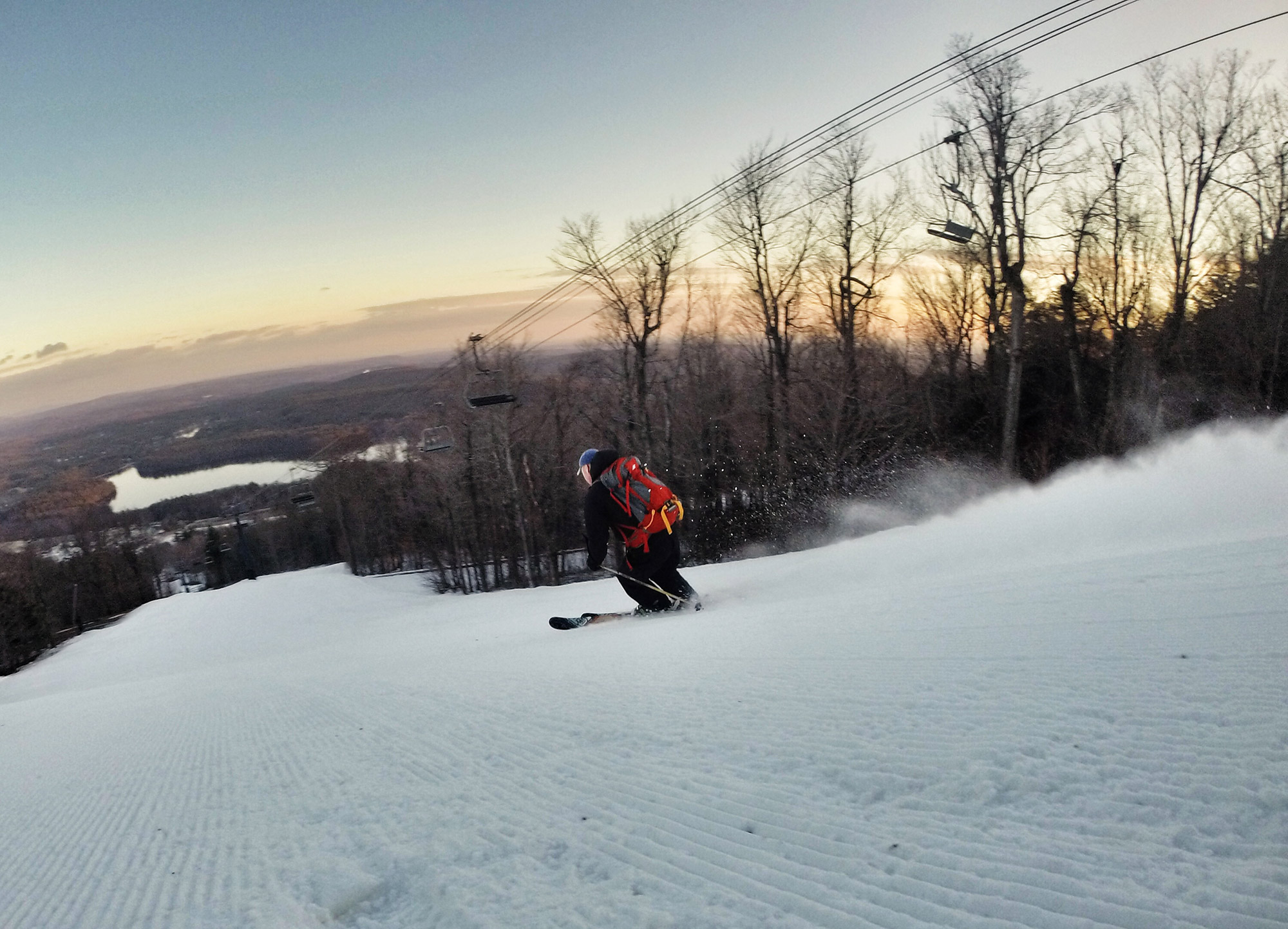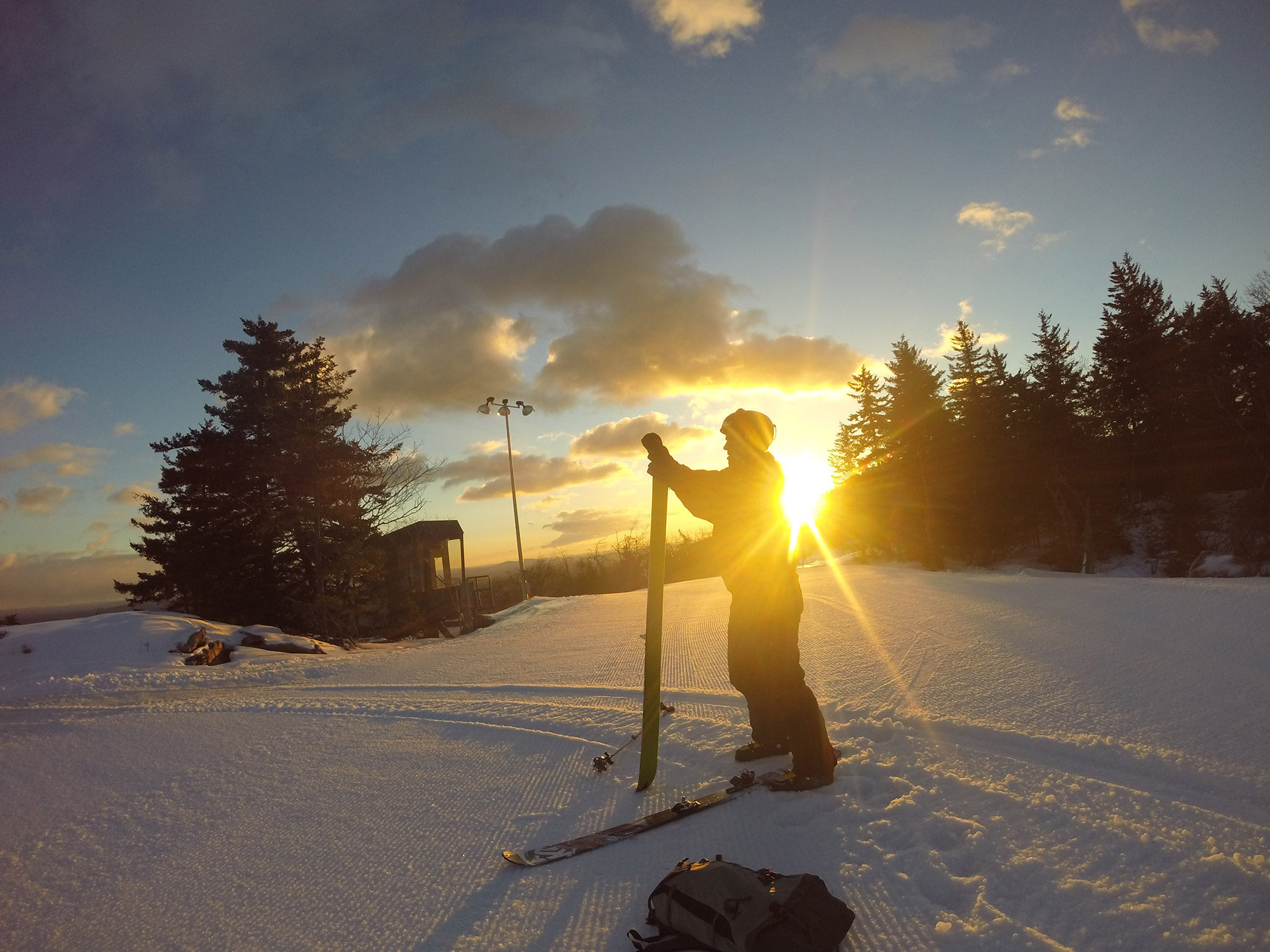Ski season is in full swing in the Northeast, with many New England-based backcountry skiers having already earned their first turns. Of course, with skiing in Tuckerman Ravine extending often into July, the reality is that now is just the beginning of the season. If you haven’t stepped into your ski boots yet, however, no worries. You still have a lot of time left! So, make the most of it with these tips to get you primed:
Skis
Tuning your skis is one of the simplest things you can do to prepare for the upcoming season. Doing so requires a little free space, a few simple tools, and a little elbow grease, making it a great way to pass time while waiting to get out there. Of course, if you don’t feel comfortable, bring them into the shop now, and beat the rush that occurs upon the season’s first real snowfall.
Want to learn more about tuning your own skis?
Bindings
While your skis are on the bench, take a minute to inspect your bindings. Start by checking their mounting screws to make sure none are loose. If you encounter a loose screw, back it all the way out, and add some wood glue or epoxy to the hole before re-inserting and tightening the screw. Or, as another option, bring it to your local shop to have a pro do it. Next, give your bindings a visual inspection to ensure the binding itself has no cracks or loose screws, before finally clicking in your boots and making sure they still securely attach.

Skins
One of the main disruptors of early-season tours is skin failure. So, before you’re midway to your first pow day, make sure your skins are up to the challenge by giving them a good inspection. Is there a bunch of dirt and debris that should be removed? Are they still sticky? If not, it might be time to re-glue them. Is the skin showing much wear? Are the tip and tail connectors in good condition? As these small parts see significant use, tip and tail connectors are a common place for a skin to fail. Is it simply time to buy new skins? Remember, it’s better to make this decision yourself, rather than waiting for the universe to decide for you.
If your skins look good to go but you’re planning on using them with a new set of skis, make sure they are trimmed to match the skis’ shape. Using a skin-cutting tool, trim the skin to cover the ski’s base while leaving the ski’s edges showing. Exposed edges give your skis some bite on ascents with steep or icy traverses.
Beacon
If your tour plans include some avalanche terrain, now is the time to get your avvy kit in order.
To start the season off right, treat your beacon to a fresh set of batteries. As a rule, old-fashioned alkaline batteries work best for beacons, while lithium-ion and rechargeable ones should be avoided. Checking with your beacon’s manufacturer is the simplest way to ensure you’re using the proper battery. However, alkaline batteries can leak, causing corrosion of a beacon’s contacts and negatively affecting its performance. So, if you didn’t take your beacon’s batteries out before storing it over the summer, check the contacts for corrosion as you replace the batteries.
If you have an extra beacon, now is the time to confirm that it’s functioning with a range test and a couple of practice searches. If you don’t have an extra one, consider getting together with your ski partner or group to confirm that everyone’s beacons function properly. Even better, this serves as a great chance for early-season avvy practice, and lets everyone you ski with re-familiarize themselves with their equipment and the basics of conducting a search. While you’re at it, check out the Backcountry Access website, which has a series of detailed videos designed to help skiers and riders improve their avalanche transceiver skills.
Pro Tip: Many newer avalanche beacons feature updatable firmware. If your beacon is updatable, check the manufacturer’s website to make sure yours is using the latest software.

Probe and Shovel
Just as with your beacon, you’ll want to be familiar with your avalanche probe and shovel before you need it. Before the season starts, spend some time practicing assembling them quickly. While you’re at it, confirm that your probe’s shock-cord still works. If it doesn’t, it’s time for a new one.
Hit the Resort
Thanks to snowmaking, Northeast resorts are far more likely to have skiable terrain than the backcountry early on. Take the opportunity to ride the lifts, find your ski legs, and make some low-consequence turns. Of course, if you’re committed to earning your turns, many resorts have something to offer skiers who like to go uphill as much as down. Places such as New Hampshire’s Cannon Mountain sell “skinning” tickets and have designated uphill travel routes, while ski areas like Vermont’s Magic Mountain not only allow free skinning on their slopes, but also reward skiers and splitboarders who climb the 1,700 feet to the resort’s summit with a ticket for one free lift ride via their “Hike One, Ride One” program.
Skinning at the resort has numerous benefits for backcountry skiers, as it allows them to build fitness for the upcoming season, dial in transitions, and, most importantly early on, confirm that their gear is in good workable condition in a comparatively controlled environment. Every mountain has unique rules and restrictions, however, so make sure you know its policy before you go. The United States Ski Mountaineering Association is a great resource for uphill policies across the U.S.

Repair Kit
Things break. To be prepared for these types of failures in the mountains, always carry a repair kit. A good one can mean the difference between an inconvenience and an epic.
For day trips, a multitool is extremely valuable, good for clearing ice from tech fittings, making a binding adjustment, cracking a beer in the parking lot, and doing far more. It’s also worth adding the various bits you will need to repair your boot or binding and a driver for the bits. Another lightweight addition to your kit, a spare ski pole basket can save an unfathomable amount of aggravation. The same can be said about skin wax. A few blocks weighing just a few ounces can prevent snow from building up on your skis, saving energy and frustration.
Additionally, we like to bring two or three ski straps—basically, the duct tape of the backcountry ski world. Extremely helpful, the material can be used for everything from holding your skis together to fixing a boot. And, speaking of duct tape, we carry that, too! Lastly, complete your kit with a few extra binding screws and tip and tail loops for your skins.
First Aid Kit
Since many backcountry areas don’t have ski patrol or pre-placed rescue equipment, the knowledge to provide first aid and the gear necessary to treat and evacuate a patient are essential. A good backcountry skiing-specific first aid kit starts with the staples: gauze, bandages, and ibuprofen. We then like to add a few ski-specific items, including a bivy or small sleeping bag to keep an injured person warm.
Seeing that cold is the enemy, we also tuck in a few hand warmers, as they are great for everything from an emergency to a morale boost. As well, a SAM splint fits into most packs and makes splinting easy. We’ve also gotten into the habit of bringing along an extra set of batteries, in the event that a headlamp dies or someone shows up to the trailhead with a beacon but no batteries.
Carrying a rescue sled is a good step to safety and self-sufficiency. If building a makeshift sled to evacuate an injured skier seems overly complicated, you can simply carry one of the numerous lightweight models sold for backcountry skiing.
Finally, it’s extremely critical to know how to use the equipment you’re carrying. If you’re heading into the backcountry this winter, seriously consider taking a wilderness first aid or wilderness first-responder course. SOLO offers classes throughout the Northeast.
Helmet and Goggles
If you’re backcountry skiing in the Northeast, you’ll most likely be carrying a helmet and goggles. Before the season starts, inspect your helmet to ensure that it has no cracks or dings. If the inspection gives you any doubt about its reliability, upgrade! Also, spend a few minutes cleaning your goggles, and give them a coat of anti-fogging Cat Crap.
Did we miss anything? Share with us your favorite tips for the preseason in the comments!

Tim Peck and Doug Martland
Tim and Doug met long ago at the Eastern Mountain Sports in Canton, Massachusetts. Bonding over a love of slick Quincy Quarry granite, White Mountain sufferfests, and scheming up adventures while folding tee-shirts, today Tim and Doug collaborate to write about their favorite outdoor activities and occasionally get nostalgic about tee-shirt tables.




